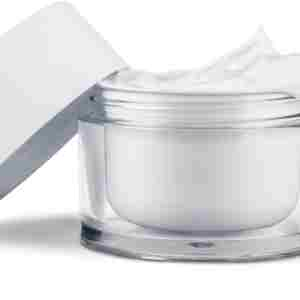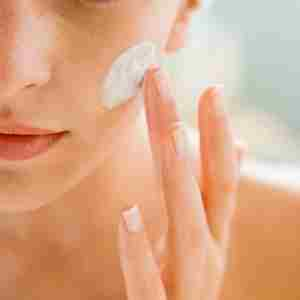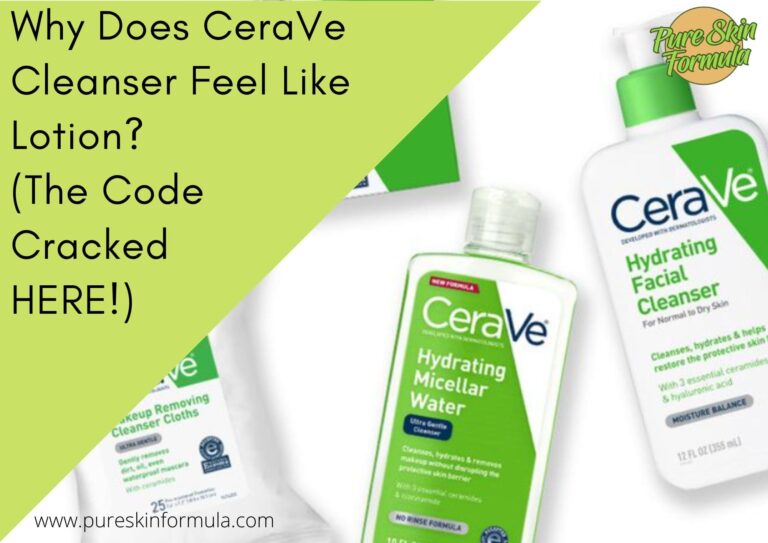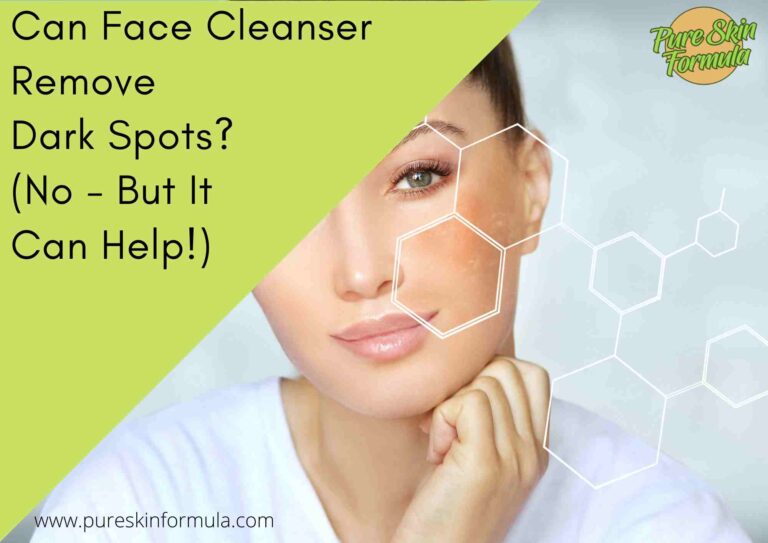It’s not just about washing away the day; it’s about awakening a glow, revealing the true luminosity within.
Join us in unraveling the art and science of cleansers as we navigate the misconceptions, explore the foundational role of cleansing, and decode the ingredients that promise a brighter, more radiant complexion—your skin, a canvas; cleansers, the artists. Let the masterpiece unfold.
Does cleanser brighten skin?
Cleansers play a crucial role in maintaining skin health by removing impurities, but their primary function is not to brighten the skin. While some cleansers may contain mild brightening agents, their contact with the skin is brief, limiting their effectiveness in achieving significant brightening results.
True skin brightening often requires specialized products like serums or moisturizers with active brightening ingredients such as vitamin C or alpha hydroxy acids.
Consistent use of a comprehensive skincare routine, including targeted brightening products, is more likely to contribute to a radiant complexion than relying solely on a cleanser.
Let’s dissect the topic.
Understanding skin brightening
At its core, skin brightening reduces hyperpigmentation, dark spots, and uneven skin tone, resulting in a luminous appearance. The intricate dance of melanin, the pigment responsible for skin color, often leads to variations in skin tone.
Brightening seeks to address these variations, promoting a harmonious and glowing canvas. Ingredients such as vitamin C, known for its melanin-inhibiting properties, and alpha hydroxy acids (AHAs), aiding in gentle exfoliation, take center stage in many brightening formulations.
It’s crucial to differentiate between brightening and skin lightening, as the latter involves altering the natural skin color. The goal of brightening is not to change one’s inherent complexion but to enhance and restore a natural radiance.

A myriad of factors influence the canvas of our skin. Sun exposure, a significant player in skin pigmentation, can form dark spots and uneven skin tone over time. Hormonal changes, particularly during pregnancy or certain medical conditions, may also contribute to variations in skin color.
Moreover, the natural aging process and environmental stressors can affect the skin’s luminosity. Antioxidants, such as vitamins C and E, become essential in combating free radicals that can dull the complexion.
Can cleansers really brighten skin?
Let’s separate myth from reality. While cleansers are essential for maintaining skin health, their primary function is often misunderstood. The brief contact of a cleanser with the skin during washing may be sufficient to bring about noticeable brightening. However, the reality is more nuanced.
Cleansers, by design, focus on cleansing the skin’s surface, removing impurities, and preparing it for subsequent skincare steps. While they contribute to a clean and refreshed canvas, expecting dramatic brightening effects from cleansers alone may lead to misplaced expectations.
To truly understand the potential impact of cleansers on skin brightness, it’s crucial to delve into the science of skincare and the specific roles different products play in achieving radiant results.
Ingredients to look for in brightening cleansers
When seeking a cleanser with brightening capabilities, the spotlight falls on specific ingredients renowned for their skin-transforming properties. One standout ingredient is vitamin C, a powerful antioxidant celebrated for inhibiting melanin production and promoting a more even skin tone.
Its brightening effects extend beyond cleansing, making it a sought-after addition to skincare formulations. Vitamin C neutralizes free radicals, which brightens the complexion and contributes to a youthful and radiant skin appearance.

Another key player in brightening cleansers is alpha hydroxy acids (AHAs). These water-soluble acids from fruits or milk exfoliate the skin’s surface, shedding dull and dead skin cells. Through this exfoliation process, AHAs help reveal a fresher, more luminous layer of skin.
Popular choices include glycolic and lactic acid, known for their brightening and skin renewal properties. When incorporated into cleansers, AHAs offer a dual action of cleansing and gentle exfoliation, contributing to a brighter complexion over time.
Vitamin C, in its various forms like ascorbic acid or its stabilized derivatives, penetrates the skin to target pigmentation, resulting in a brighter and more uniform complexion.
On the other hand, alpha hydroxy acids (AHAs) break down the bonds between dead skin cells, promoting cell turnover. This not only aids in removing dullness but also facilitates the skin’s ability to absorb other beneficial ingredients.
The synergy of these brightening agents in cleansers transforms a simple cleansing routine into a strategic step toward achieving radiant skin.
The importance of consistency in skincare
Achieving glowing skin goes beyond sporadic efforts; it necessitates the commitment to a consistent skincare routine. Cleansing, as the foundational step, sets the stage for this consistency.
Consistent use of a well-formulated cleanser ensures the regular removal of impurities, preventing the accumulation of debris that can dull the complexion. Think of it as a daily reset button for your skin, paving the way for subsequent skincare products to work more effectively.
While the immediate effects of a cleanser include refreshed and purified skin, the cumulative benefits become apparent with regular use over time. By diligently removing impurities, a cleanser assists in preventing the development of dark spots and uneven skin tone caused by environmental factors and daily stressors.
The holistic approach to skincare matters

Skin brightening is a multi-faceted journey that thrives on a holistic approach to skincare. While cleansers are the opening act, the true magic happens when they join forces with complementary skincare steps.
Integrating serums, moisturizers, and treatments specifically formulated for brightening enhances the overall efficacy of the routine. These products often contain higher concentrations of potent ingredients, allowing for more targeted and noticeable results.
Adopting lifestyle practices that support skin health, such as staying hydrated, protecting the skin from sun damage, and maintaining a balanced diet, contributes to the holistic approach.
Combining these elements ensures that the canvas on which the cleanser operates is well-nurtured, promoting surface-level radiance and a sustained and comprehensive improvement in skin tone.
What do dermatologists say?
These skincare professionals offer invaluable insights grounded in scientific knowledge and clinical experience. According to dermatologists, cleansers are fundamental in maintaining skin health but are not the sole solution for achieving significant skin brightening.
Dermatologists emphasize the importance of understanding individual skin types and specific concerns. While a well-formulated cleanser can contribute to a healthier complexion, personalized skincare routines that include targeted treatments are often necessary for addressing specific issues like dark spots or uneven skin tone.
Dermatologists may recommend cleansers with specific ingredients, such as gentle exfoliants or antioxidants, tailored to individual needs.
What do users say?
Let’s turn to the skincare community to add a personal touch to exploring cleansers and their impact on skin brightness. Countless users have embarked on unique journeys, experimenting with various cleansers and documenting their experiences.
Their stories provide valuable insights into the real-world application of brightening cleansers and how they fit into diverse skincare routines.

Many users share anecdotes of discovering newfound radiance after incorporating brightening cleansers into their daily rituals. From faded dark spots to a more luminous complexion, these firsthand accounts offer a glimpse into the potential positive effects of using the right cleanser.
Users often highlight the importance of patience, noting that significant changes may take time, reinforcing that skincare is a journey rather than a sprint.
While some people report remarkable improvements, others may experience more subtle changes. Factors such as skin type, specific concerns, and the presence of other skincare products in their routines contribute to this variability.
Engaging with these diverse narratives allows readers to glean insights into potential challenges and successes, fostering a more realistic understanding of what to expect.
In addition to success stories, users often share practical tips and tricks for maximizing the benefits of brightening cleansers. These may include layering techniques, integrating additional brightening products, or adjusting the frequency of use based on individual skin responses.
To wrap it up
While cleansers play a pivotal role in maintaining a healthy canvas, expecting them to be the sole architects of luminosity may be a stretch. From understanding the intricacies of skin brightening to deciphering cleanser ingredients, this exploration is a testament to the science and artistry of skincare.
Realistic expectations, expert insights, and user experiences converge to emphasize the importance of a holistic approach. So, as you embark on your skincare odyssey, let cleansers be the opening act, setting the stage for a brightening performance orchestrated by a well-curated skincare ensemble.
Thank you for reading!
Valeria







